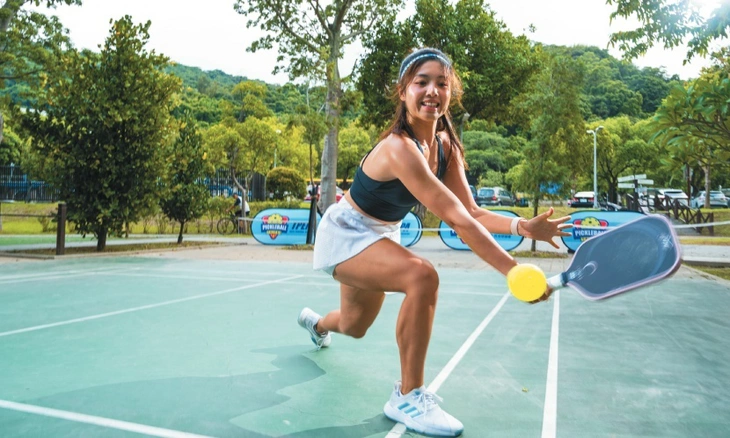
Pickleball has a higher injury rate than many people think - Photo: TO
With its fast pace, compact court, simple equipment, and easy-to-follow techniques for beginners, pickleball is considered by many as a "gentle recreational" sport, suitable for those who don't exercise regularly.
The reality is showing a completely different picture: the rate of injuries in pickleball is increasing rapidly and seriously.
Many people who go to the pickleball court just to play for fun end up suffering from all sorts of injuries.
Here are the reasons analyzed by scientists :
Women are not yet familiar with sports.
According to statistics from the American Academy of Orthopaedic Surgeons (AAOS), over 50% of pickleball-related injuries occur in women aged 30 to 55.
This group, who had previously led sedentary lifestyles for many years, are now returning to sports with enthusiasm, wanting to keep up with the trend or improve their health.
The abrupt transition from a static state to high-intensity activity can easily lead to injuries to the musculoskeletal system.
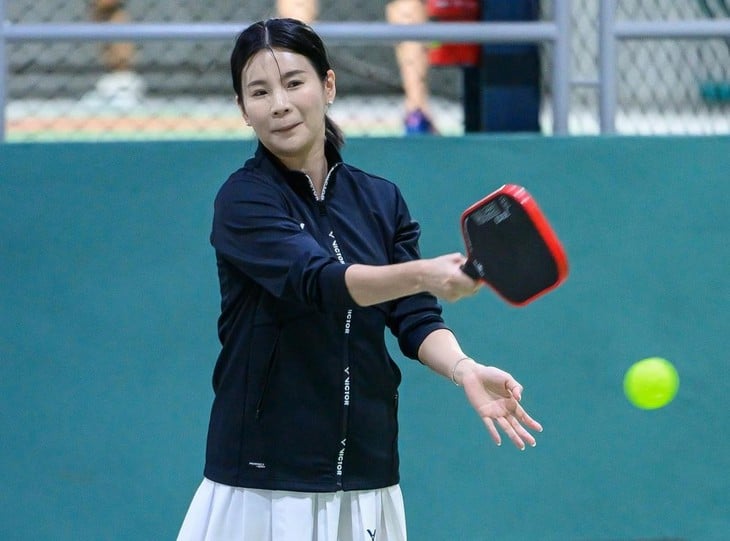
Women over 30 are more prone to injuries - Photo: TA
According to Dr. Leslie Michaud (University of Colorado, USA), women's bodies begin to experience a decline in bone density after the age of 30, along with a gradual loss of muscle mass if they do not have a foundation of regular physical exercise.
When engaging in strenuous activity or making sudden changes in posture, the risk of sprains, tendon tears, or fractures is very high, especially in the wrists, ankles, knees, and shoulders.
Even younger women are completely unaware of the importance of warming up, cooling down, and the "stopping point" technique. This is the most common "injury trap."
The playing field does not meet standards.
Pickleball requires a flat surface with the right amount of grip—not too hard and not too slippery.
Due to the rapid explosion of the pickleball craze, many people have been using tennis courts, badminton courts, or even vacant lots to play. This inadvertently increases the risk of accidents as players run, stop, jump, and change direction.
Tennis courts are typically very slippery, suitable for long, steady strides, while pickleball requires quick reflexes and constant changes of direction.
Badminton courts are smooth and lighter, making it easy to slip. Meanwhile, makeshift dirt courts are often uneven, with foreign objects or potholes, making players more prone to tripping or dislocating if they land incorrectly.
According to sports biomechanics expert Steve Gallimore (Australia), the human musculoskeletal system can adapt to different sports, but only if the playing surface conditions are designed to be compatible.
Any deviation in flatness, roughness, or elasticity can directly affect a player's reflexes, landing force, and even joint rotation. When combined with ill-fitting shoes or poor technique, the risks increase significantly.
Climate and weather factors
Unlike indoor sports, pickleball is primarily played outdoors. In tropical countries like Vietnam, hot weather, high humidity, or unpredictable weather changes throughout the day directly affect the body's ability to move and recover.
High temperatures cause muscles to tire quickly and reduce elasticity; excessive sweating leads to dehydration, reduces blood flow to hard-working muscle groups, and increases the likelihood of cramps or muscle tears.
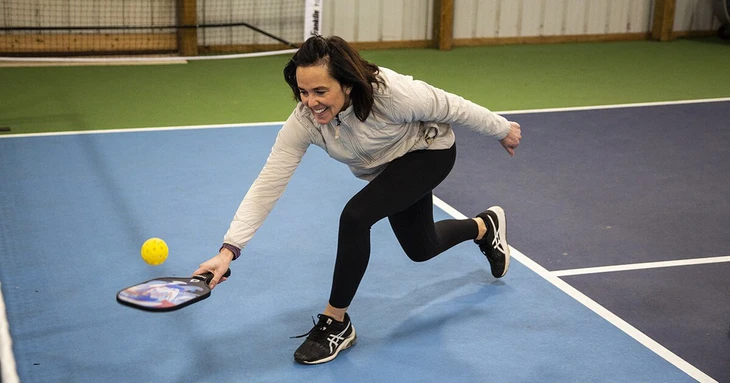
Incorrect technique is also a factor leading to injury - Photo: PA
Additionally, the court surface can become too hard in hot sun or too slippery in humid weather, increasing the risk of slips and falls. High humidity also increases friction between the shoes and the court surface, impairing reflexes and making it easier to sprain or dislocate the ankle or knee.
According to the Journal of Environmental Physiology (2022), outdoor exercise in hot weather without proper preparation in terms of clothing, hydration, and adequate rest can increase the risk of muscle and tendon injuries by 30–40% compared to exercise in cool, stable conditions.
Pickleball is not as easy as many people mistakenly believe.
This is perhaps the most common misconception. Despite having a smaller court area than tennis, a lighter ball, and a shorter racket, pickleball is played at a faster pace, requiring constant reflexes and almost nonstop movement.
A game lasting 15–30 minutes can burn as many calories as jogging at a moderate pace.
According to Harvard Medical School, playing pickleball at a moderate intensity burns between 400 and 600 calories per hour – comparable to playing doubles badminton or amateur soccer.
Furthermore, technique in pickleball is often overlooked by players. Many use their shoulder and elbow muscles incorrectly when hitting the ball, or lack proper footwork and landing technique, leading to muscle strain, arthritis, or ligament tears in a short period of time.
Sports doctor David Geier (USA) warns: "Pickleball is only gentle if you have the right technique, are properly prepared, and play in moderation. But when players consider it a 'practice sport,' that complacency is what's dangerous."
According to data from the NEISS (National Electronic Injury Surveillance System) injury surveillance system in the US, the period from 2010–2019 recorded 28,984 pickleball-related injuries in people aged 60 and over, compared to 58,836 tennis-related injuries.
From 2018 onwards, the number of pickleball injuries in this group has caught up with and even surpassed tennis, due to the rapid increase in the number of pickleball players.
The most common injury mechanism in pickleball is falling, resulting in fractures of the wrist, shoulder, or hip – accounting for approximately 28% of all cases. Meanwhile, tennis typically causes soft tissue injuries such as sprains and muscle strains.
Notably, the rate of hospitalization due to pickleball injuries is higher than that of tennis (17.9% compared to 14.5%). Experts warn that, despite being considered a "gentle" sport, pickleball poses many risks for older adults – even more dangerous than tennis if not played correctly and without the appropriate physical fitness level.
Source: https://tuoitre.vn/noi-pickleball-la-mon-the-thao-nhe-nhung-sao-chan-thuong-nang-2025062518153656.htm









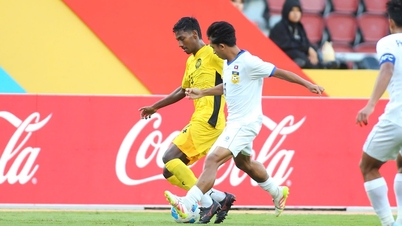




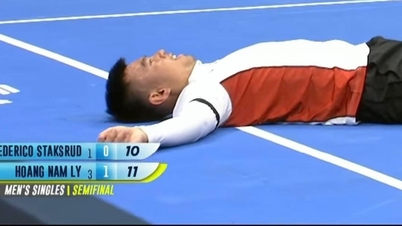
















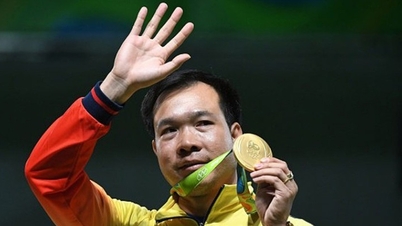


![[Photo] Prime Minister Pham Minh Chinh holds a phone call with the CEO of Russia's Rosatom Corporation.](/_next/image?url=https%3A%2F%2Fvphoto.vietnam.vn%2Fthumb%2F1200x675%2Fvietnam%2Fresource%2FIMAGE%2F2025%2F12%2F11%2F1765464552365_dsc-5295-jpg.webp&w=3840&q=75)










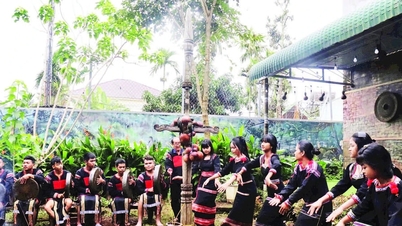







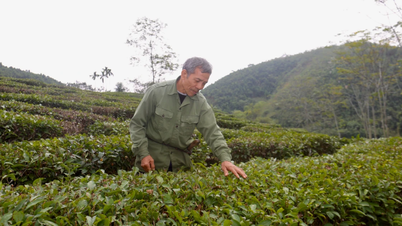





























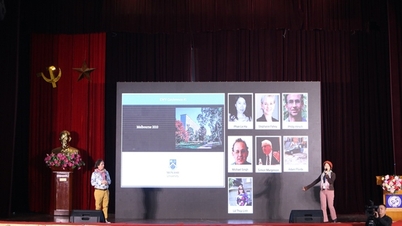























Comment (0)